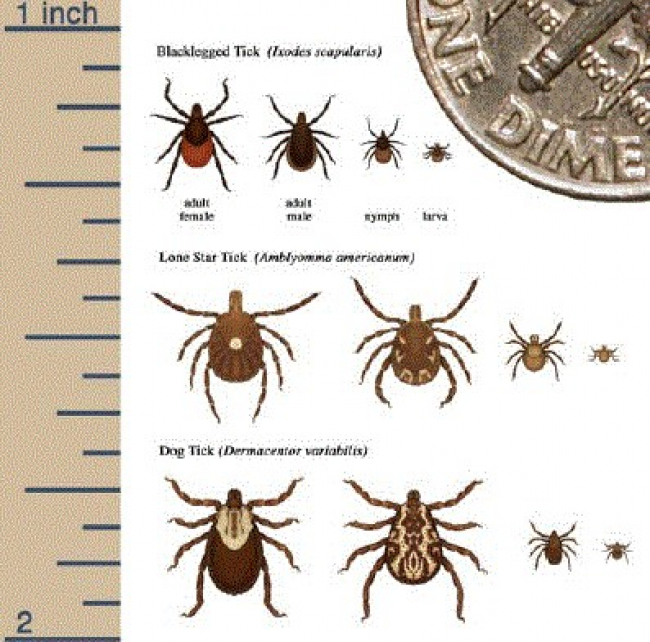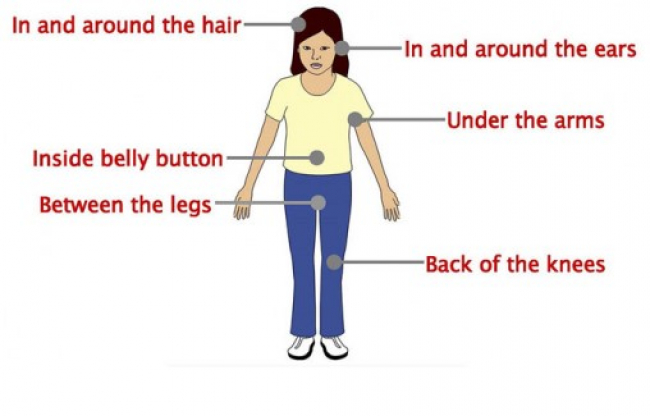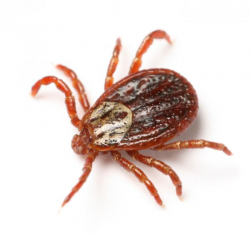Ticks and Tick Prevention
Only one kind of tick in Oregon and most of the western United States carries Lyme disease, but distinguishing it from the other three species that prey on humans can be difficult.
For that reason, Philippe Rossignol, professor in the fisheries and wildlife department at Oregon State University, recommends first contacting OSU Extension county offices, to help identify ticks.
Deschutes County Extension Service
Oregon State University
3893 SW Airport Way
Redmond, OR 97756-8697
Phone: 541-548-6088
If they are unable to help, you can submit samples to the OSU Insect ID Clinic, which identifies what kind of tick has been removed from humans or pets. The clinic cannot, however, identify if the tick carries the Lyme disease bacterium.

Tick Species
About 20 species of hard ticks are found in Oregon, but only four are known to prey on humans: western black-legged tick, Rocky Mountain wood tick, American dog tick and Pacific Coast tick.
The western black-legged tick is the only known carrier of Lyme disease in Oregon. The other known vectors of Lyme disease in the United States are the deer tick in the eastern part of the country and the eastern black-legged tick in the southeast.
"It is believed that only about one to five percent of western black-legged ticks actually carry the bacterium responsible for Lyme disease," Rossignol said. "Both adults and immature ticks transmit the disease, and they must be attached to the host for 24-48 hours before they can pass the bacterium to humans.
"In Oregon, adult ticks are active primarily in the spring and early summer, but also can be found in the fall," Rossignol said. "When ticks seek a host, they perch on low branches of shrubs or tall grass and wait to attach to a passing bird, animal, human, or even reptile."

Prevent Tick-Borne Illness
With warmer weather, you know that it is the t time of year for ticks, and bites are on the rise. Here are a few tips from the CDC that you can take to prevent bites:
- Know where to expect ticks. Ticks live in grassy, brushy, or wooded areas, or even on animals. Spending time outside walking your dog, camping, gardening, or hunting could bring you in close contact with ticks. Many people get ticks in their own yard or neighborhood.
- Treat clothing and gear with products containing 0.5% permethrin. Permethrin can be used to treat boots, clothing and camping gear and remain protective through several washings.
- Use Environmental Protection Agency (EPA)-registered insect repellents containing DEET, picaridin, IR3535, Oil of Lemon Eucalyptus (OLE), para-menthane-diol (PMD), or 2-undecanone. EPA’s helpful search tool can help you find the product that best suits your needs. Always follow product instructions. Do not use insect repellent on babies younger than 2 months old. Do not use products containing OLE or PMD on children under 3 years old.
- Avoid Contact with Ticks. Avoid wooded and brushy areas with high grass and leaf litter. Walk in the center of trails.
After you come inside, there are a few more steps to take:
- Check your clothing for ticks. Tumble dry clothes in a dryer on high heat for 10 minutes to kill ticks on dry clothing after you come indoors. If the clothes are damp, additional time may be needed. If the clothes require washing first, hot water is recommended. Cold and medium temperature water will not kill ticks.
- Shower soon after being outdoors. Showering within two hours of coming indoors has been shown to reduce your risk of getting Lyme disease and may be effective in reducing the risk of other tickborne diseases. Showering may help wash off unattached ticks and it is a good opportunity to do a tick check.
- Check your body for ticks after being outdoors. Conduct a full body check upon return from potentially tick-infested areas, including your own backyard. Check out the image above for frequently missed spots to check.
What To Do If You Are Bitten By A Tick
- If possible, have someone else remove the tick from your body
- Use tweezers or forceps rather than fingers
- Grasp the mouth parts or head end of the tick as close to the skin as possible
- Gently pull the tick straight out, steadily and firmly
- The mouth parts are barbed like a harpoon and might break off in the skin. If so, don't be concerned. They do not carry the bacterium and are no more harmful than a sliver
- Wash hands and the bite area with soap and water; apply an antiseptic to the bite area
- Keep the tick for identification if disease symptoms occur later. Place the tick in a small container of alcohol labeled with the date removed and the place it was picked up
- Use the same procedures and precautions when removing ticks from pets
Tick-Borne Illness in Central Oregon
Learn more about ticks in our region by visiting here:

